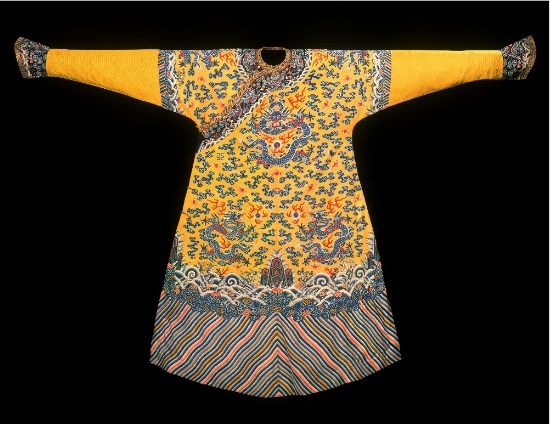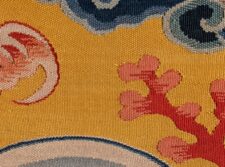
Unknown
Chinese
Man's Dragon Robe with Twelve Imperial Symbols, 19th c. CE, mid
yellow silk slit-tapestry weave with painted details; yellow fabric in sleeves is a later addition; central hem slits sewn at a later date
56 x 87 in.
SBMA, Gift of Mrs. Philip B. Stewart
1941.23.3

Detail
COMMENTS
The dragon robe or "jifu" (literally “auspicious garment”) was the official robe of the Manchu-ruled Qing dynasty. They were adapted from the voluminously draped Chinese court robes of the previous Ming dynasty to a more fitted dress with narrow sleeves and slits befitting a nomadic horse-riding lifestyle. They were worn by men (and sometimes by their wives and daughters) holding official bureaucratic positions throughout the empire, from the emperor and his courtiers in the capital Beijing down to local magistrates and their staff.
Golden-yellow robes such as this one, woven with the “Twelve Imperial Symbols”, were restricted in both color and decoration and were worn only by the emperor and his immediate family. The Twelve Symbols, as well as the dragons and cosmic landscape depicted on the robe, have roots in ancient China and were adopted by Manchu rulers to project their authority and power and to proclaim the status of the wearer as the ruler of the universe. The symbols are small and are symmetrically arranged in three rings: below the neckline, above the waist, and above the waves.
Slit-tapestry Weave ("kesi") — usually a plain weave technique in which thread color changes in the horizontal weft resulting in small slits. This time-consuming technique facilitates the creation of complex, colorful patterns on a simple loom.
- Wall Text, Asian Art Reopening, 2021
